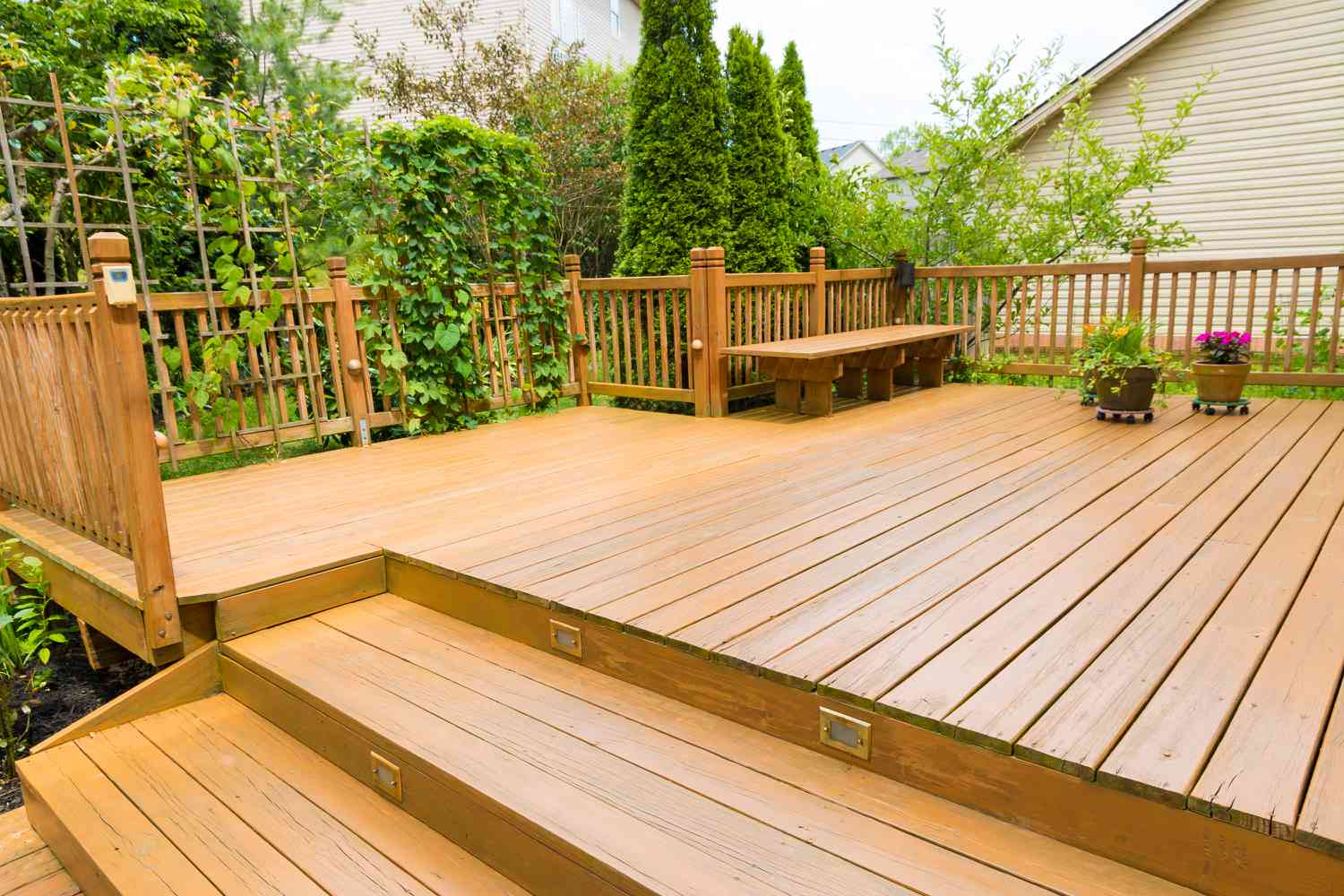Selecting The Best Fasteners For Durable Deck Construction
In the construction of decks, picking the appropriate fasteners will ensure that your outdoor area is safe. They may appear tiny compared to the huge, beautiful wood deck boards. However, your whole deck is built on strong, well-chosen connections that can stand up to constant exposure to the elements and the demands of everyday use. A well-constructed deck will not only improve the look of your backyard, but it will also ensure security for many years to come.
Choosing the right fasteners could be a bit difficult considering the many options available deck screws and stainless steel fasteners and deck anchors to mention some. But making an educated choice can make a huge difference in how your deck will perform. Below, you’ll get insight into the various fastening methods for decks, and the best way to select equipment that is best suited to the materials you’re using and your building needs.
Why the Right Deck Screws Matter
Deck screws that are specifically designed for outdoor use can help to prevent splitting and results in less loose boards in the course of time. When building a wooden deck, screws designed for pressure treated lumber or hardwoods are more durable than standard fasteners. Some deck screws are equipped with corrosion-resistant coatings, that combat the deterioration caused by moisture.
You’ll see galvanized deck screws as well as wood deck fasteners at stores for renovations However, be certain to verify that they are suitable for outdoor use. Steel fasteners made of stainless steel, in contrast, can provide the best quality of protection and hold, but they are more costly. If you decide to use coated or stainless steel, you must ensure that you match their strength to the thickness and weight of the decking to reduce the chance of ripping or snapping.
Exploring Lag Bolts and Deck Framing Hardware
Lag bolts provide the strong connection that is required in situations where substantial structural strength is needed. You’ll typically see them used for securing ledger boards or anchoring posts to support. The most important thing to consider is the proper size and diameter. Be sure to verify your local building codes, as the different regulations for decking equipment differ in the dimensions and types of lag bolts to be used to ensure safety.
The deck framing hardware comprises parts like bracket connectors and deck joist hangers, along with deck framing connections to connect your horizontal beams as well as vertical posts with a secure connection. Bracket connectors are especially useful at joints where large loads are present, while deck joist hangers ensure that the joists are locked in place over the ledger. Every piece of deck installation parts should work with your lumber and the environmental conditions at your site.
Making the Most of Deck Joist Hangers
Deck joist hangers are stainless steel fittings that hold each joist, making sure the framing is sturdy under the weight of decking boards and the other items above it. Choosing corrosion-resistant fasteners for attaching hangers will prevent weakness over time. Marine-grade fasteners could be an option for those who reside in an environment that is corrosive, close to the ocean. The most important thing is to ensure correct alignment and consistent spacing between the joists to prevent the possibility of sagging.
Benefits of Using Hidden Deck Fasteners
Hidden deck fasteners give your deck an attractive appearance. They remove visible screws and nails, resulting in an elegant finish on the decking boards. For deck fasteners for wood These systems typically include clips or brackets that secure between the boards, and secure them to joists from below or in an angle.
If you are building using the composite deck screw, this hidden method can make the synthetic boards appear more polished. Deck fasteners that are hidden reduce the possibility of moisture intrusion, since there are fewer holes on the top surface. Manufacturers typically include decking clips or brackets that work in conjunction with their products and make the process of installing boards easy.
Staying Secure by Using Rust-Resistant Fasteners
Rust is a major factor that can affect the lifespan of deck fasteners. Fasteners resistant to rust, like stainless steel or a hot-dipped galvanized option, protect the structure of your outside space. When using nails for decks to fix certain components, make sure they’re coated with a protective layer to withstand damp conditions.
Self-drilling screws can be another alternative. They will reduce the time required by drilling the hole, which helps prevent splitting of the wood. Certain fasteners designed for deck construction are equipped with special threads that hold the wood better. Fasteners for deck rails also require corrosion-resistant coatings. Hands that are frequently in contact with them, as well as exposure to the elements, can cause problems with the connection when the hardware isn’t up to the job.
Proper Use of Bracket Connectors
Bracket connectors, like angle brackets, are used to reinforce 90-degree joints, where stability is vital. Choose screws for exterior use that are long enough to go through the frame, the decking material, and then into frames behind. The structural fasteners used in these places should be able to handle loads from the lateral side without breaking or snapping. Combine them with an anti-corrosion finish to ensure an encapsulated connection and reduce maintenance.
Pressure-Treated Fasteners and Deck Post Anchors
Pressure-treated lumber may be rough on certain types of materials so choosing fasteners that are treated to pressure that are resistant to chemical reactions is crucial. Find fasteners that are specifically labeled for use with pressure treated lumber in order to prevent any early discoloration or discoloration.
Anchors for deck posts are essential to keep your posts in place and free of ground moisture. They usually have metal bases that raise the post slightly from the deck’s footings or concrete surface, decreasing the risk of rot developing at the base and the bottom. If you’re working on elevated decks, the deck anchors may be used in conjunction with bracket connectors or deck framing equipment to make the structure stronger.
Special Considerations for Composite Deck Screws
Composite deck screws are specially designed to work when used with composite materials. They come with specialized threads and heads that reduce the possibility of mushrooming on composite boards. This is essential for a level surface as well as a neat surface. Certain screws have caps that are colored and blends in with wood deck making the screws nearly disappear.
Picking the right screw length is essential to ensure adequate grip when framing. Long fasteners can cause splits, while smaller ones aren’t strong enough to hold the board. Securely fastened composite deck fasteners will help prevent squeaking noises or boards shifting when you are walking across them.
How to deal with composite deck fasteners
For composite decking, hidden deck fasteners remain an option. But it is important to confirm that they’re suitable for your particular model of deck. Composite boards change in various ways from timber, and therefore, the system used to fasten them must accommodate that expansion and contraction. The marine-grade fasteners are beneficial if you reside in a humid or coastal area, but make sure to check the recommendations of the product to be certain.
Decking Clips, Deck Rail Fasteners, and More
Decking clips safeguard the appearance of the surface by securing boards by securing them from the sides or beneath. They are an attractive, gap-controlled design. If you are installing the decking clip, ensure they are thick enough to the boards to ensure a solid grip. Certain clips have stainless steel parts, which ensures that their weatherproof fasteners will provide durable performance even in conditions that have high levels of moisture or salt air.
Deck rail fasteners are available in a variety of sizes and shapes, based on the railing’s design. If you’re installing a wood railing or metal system, make sure you check the load ratings and recommended deck fasteners for boards. Self-tapping screws are an excellent choice for railings that require a fast and secure connection, without drilling. Consider decking materials that can endure the effects of temperature variations and tension without becoming weaker.
Maintaining Up-to-date with the Exterior Conditions
Hardware for outdoor decks is subject to a myriad of problems with weather, such as snow, rain, hot sun, and humidity. Pick decking fixing systems that are specifically designed to handle the outside elements’ decay and moisture. If your area experiences significant snowfall, be on the lookout for products that have weatherproof fasteners. They not only decrease the requirement for replacements but also aid in maintaining a solid deck during freeze-thaw cycles.
Investing in premium deck anchors and decking nails and self-tapping screws can help you save time and money in the longer term. If your deck framing connectors are in good condition and you can avoid the expense of repairs. Be sure to follow the manufacturer’s guidelines regarding tension requirements for installation and be aware of any specific adhesives or washers, if they are suggested.
Final Word of Advice
Create your deck around the most suitable fasteners from the beginning. By combining sturdy deck framing hardware, sturdy brackets, well-chosen screws and nails as well as hidden deck fasteners to keep your deck secure and functional for a long period of time. This strategy not only provides an even walking surface, but also a sense of security that the deck will withstand water, corrosion, and natural movement of composite or wood materials.
The best materials and the right installation will result in decks that are built to last for endless gatherings and peaceful mornings, too. Selecting reputable brands for crucial fasteners is an excellent choice. Make sure to check the labels for features with an exterior rating or other specialized treatment. In the end, it’s worth taking time to choose products that are compatible with the design of your deck as well as your climate and the standards of performance you want to meet.




